Sometimes creating a podcast is easier than writing" - Creating podcasts (1) Planning
When you create a Steemit account for the first time, you would be most concerned about what to write. I’ve explored Steemit for a few weeks and realized that the most popular posts were about virtual currency. Steemit has more than 861 thousand subscribers (as of March 15, 2018) but the topics covered by its users seemed to be pretty narrow. When you look at the Korean postings, the topics covered are even narrower.
In fact, “writing” is all about “what you want to say.” Whenever somebody experience difficulty in writing and asks me for a piece of advice, I always ask this question. “Is there something you really want to say?” I love the writings that contain what the author truly want to talk about – even if these stories may create a million anti-fans- rather than a story without any substantial content.
Then, where can I find what to say? First, find something among things that are part of your daily life that could be interesting for someone else. In other words, it is necessary to have a new perspective of looking at yourself as a content. It means that you should not look at yourself as just you but as a potential content. For example, raising children could be a natural routine for moms. However, for someone else, it could become an interesting story. If you are a high school student, you could write about when you went to school, what was on the school lunch menu today, or what teachers emphasized for getting into universities. These could become an amazing content.
For me, I noticed that my daily life in an foreign country could be an interesting content for others and created those story into podcasts. On March 14 in Korean time, we started airing a podcast named “Finland in my ears.” We prepared for two months before broadcasting them.
I believe that if you have laid your feet on Steemit, you have a good chance of becoming a podcaster. For people who feel that it is easier to express themselves in speech than writing, Podcasts can be an easier way of communicating contents. Today, I would like to talk about planning and preparing for podcasts in general.
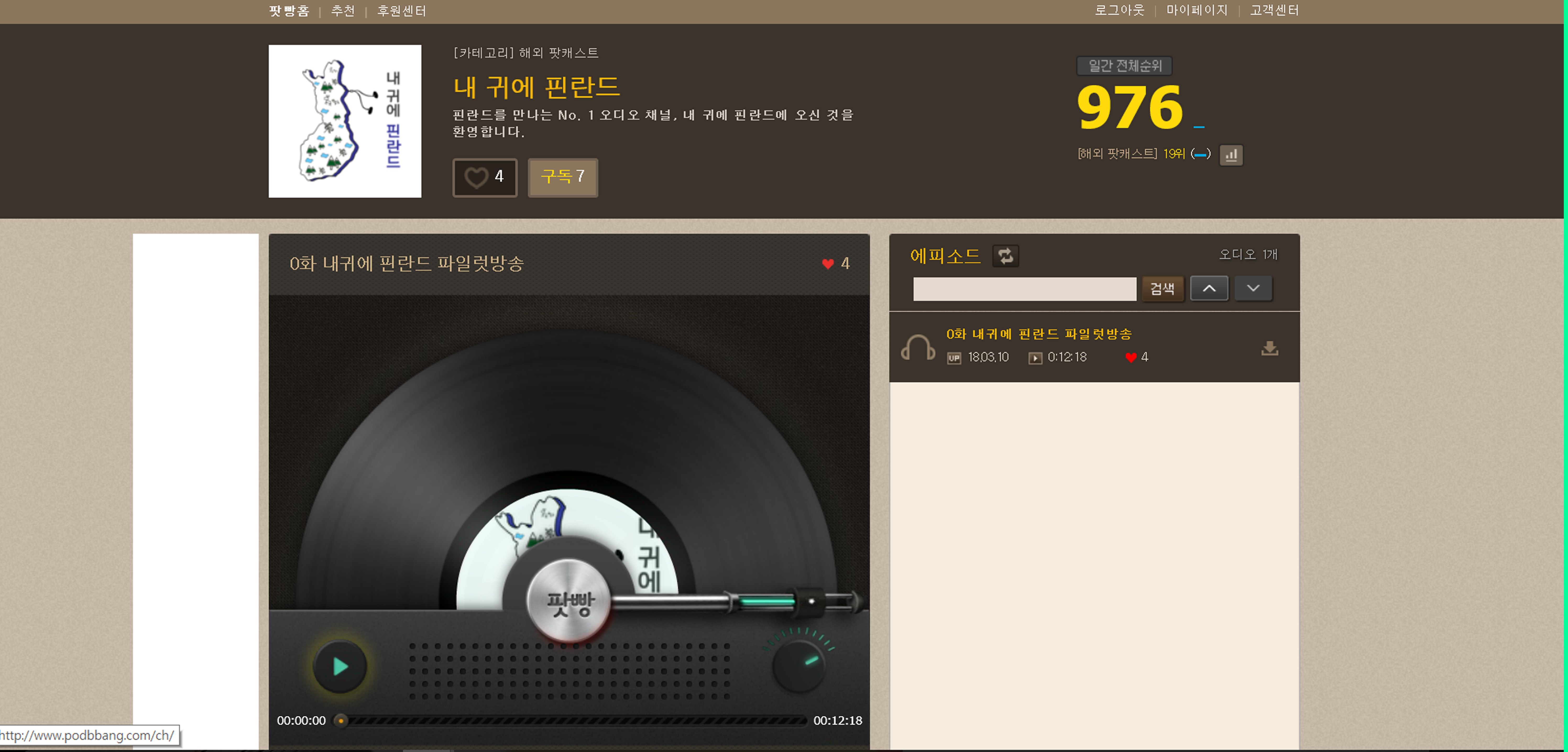
A. Choosing a title and creating a thumbnail
The first thing you need to consider when creating a broadcast, even for mainstream
media, is a ‘planning intention.’ You need to think about the basic blueprint including
what is the purpose of the broadcast, who is the target, and what kind of content you
can provide. A broadcast founded on a strong “planning intention” can last long. If
you can think of more than ten episodes to air, it is safe to say the potential of the
broadcast is already good enough.
Next step is to choose a title. I think the title should be intuitive and include key
keywords because it best shows the broadcast concept. Our broadcast title had Finland
in it because we were planning to talk about Finland. Then, we added “in my ears” to
emphasize that it will be an audible content. There were many ideas, but this is why
“Finland in my ears” was chosen in the end.
Next, you need to create a thumbnail (representative image). 1400X1400 size is
recommended for Podbbang. It is because the image size requested by iTunes is a
1400x1400 jpg or png file.
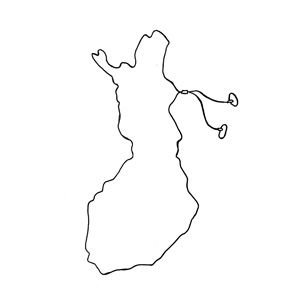
I looked for an image of Finland map using iPad to create the thumbnail. I traced the
map using a paper. I remember that I had to redo it for about three times. The screen
kept moving because it recognized my hand. I draw forests, lakes, bilberries, and
reindeers inside the Finnish map but it didn’t look complete. So, I added an image of
an earphone.
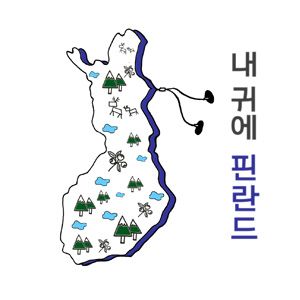
B. Signing up for a broadcasting account
There are many ways to broadcast podcasts on air, but the most common podcast
platform in Korea is Podbbang (www.podbbang.com). Podcast is a compound word
made with iPod and broadcast. iTunes podcasts are originals. Although it is a bit
complicated to use Korean Podbbang as you have to download and subscribe the app,
it is a great place to start in the beginning because it has loyal users who are open to
audible contents like podcasts.
After completing the Podbbang subscription, apply for broadcast screening at
broadcast registration menu under My Menu section. You will be approved after one
or two days. Then, enter in various information about the broadcast and upload
episodes. Podbbang provides basic analytical data on the number of people listening
by country, time, and day of the week.
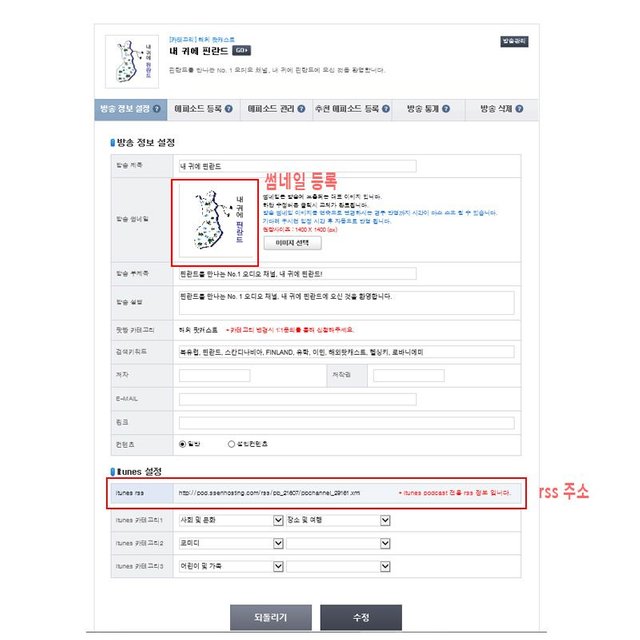
Since Podbbang has a hosting server and provides RSS address, you can automatically
link your broadcast to iTunes. You can find iTunes RSS info on broadcast registration
menu so copy the information. Open iTunes on your computer and submit your
podcast. (The button should be in the middle of the right-hand side.) Submission will
be approved in a day or a week. When you upload an episode on Podbbang, the RSS
will be uploaded to iTunes podcast automatically, conveniently linking it to iTunes.
Also, you can also run podcast channels through Podty, YouTube, and Sound Cloud.
As for me, I only upload podcasts on Podbbang (+ iTunes) and YouTube and use a
Facebook page to create publicity because I did not want to spread the ‘firepower.’
This is it for today. I will return with a second article on Creating podcasts (1)
Technology.
By the way, my first pilot episode was on air. I will share a link, so if you are interested, please listen to the podcast!
🎧 Podbang : http://www.podbbang.com/ch/16189
🎧 Itunes : "내귀에 핀란드"
Source text : https://steemit.com/kr/@finlandinmyears/1
Translated by Aimee Bak(https://www.babeltop.net/ko/dashboard/order?translatorUsid=52bb45d8fd4c)
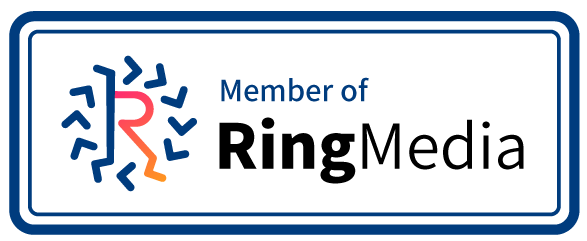
짱짱맨 호출에 출동했습니다!!